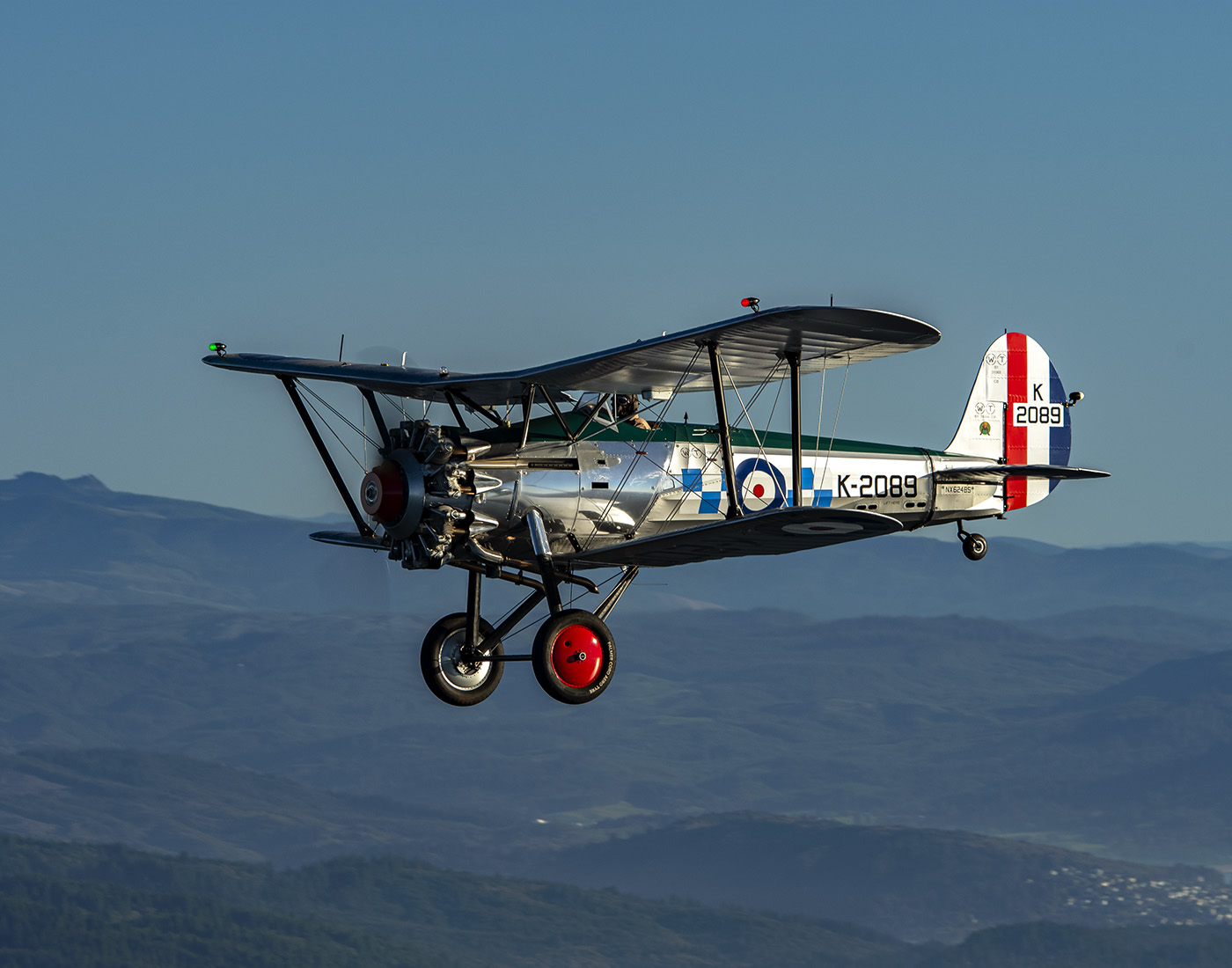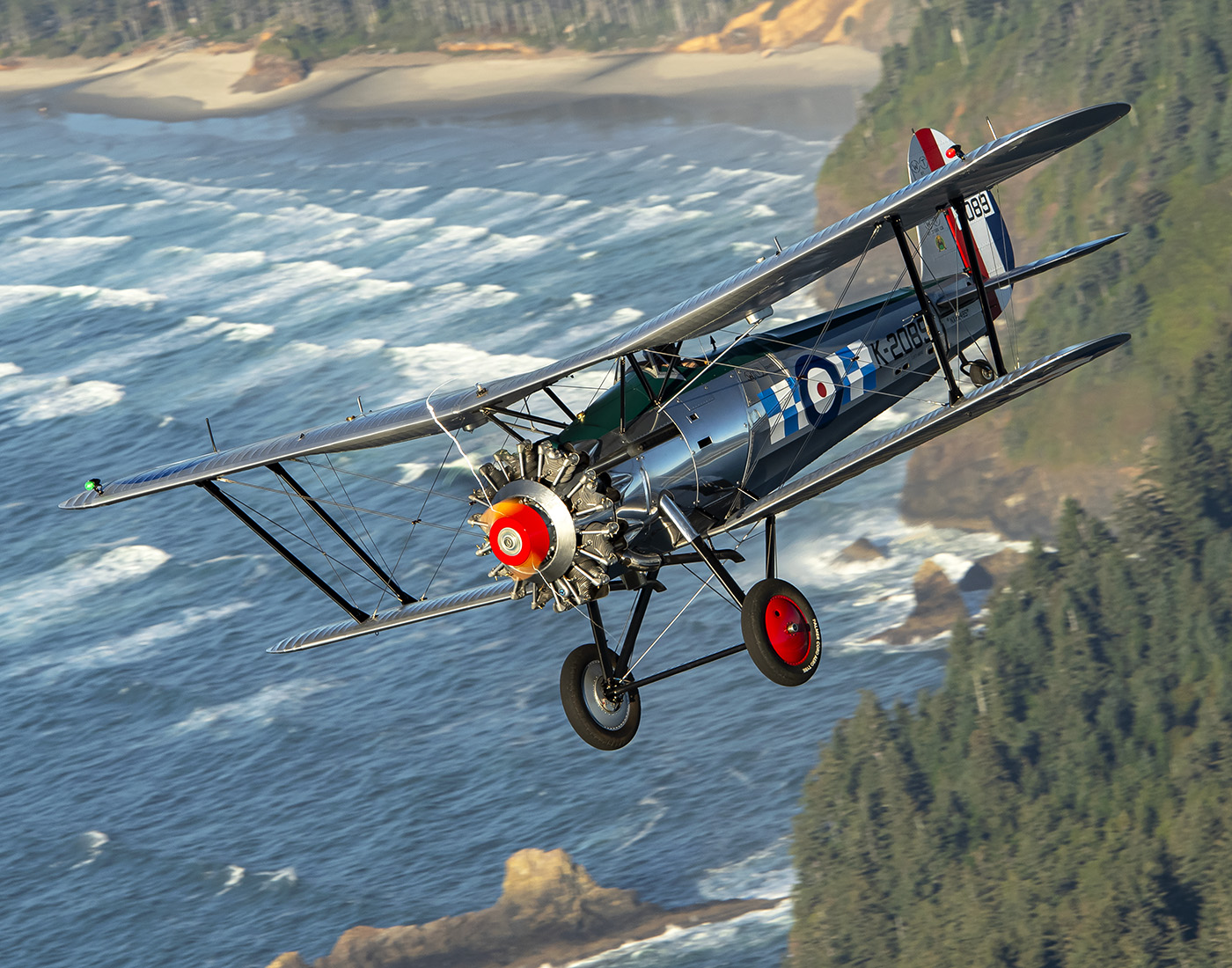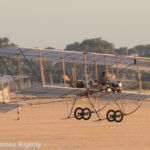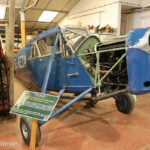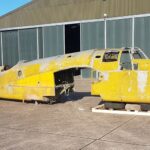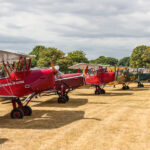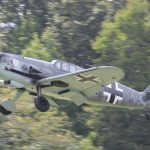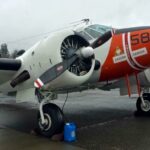by David L. Leininger
Developed in the late 1920s, the Royal Air Force’s Bristol Bulldog entered service in May 1929. The single engine, single seat biplane fighter was the RAF’s frontline fighter through most of the 1930s. Bulldogs were exported to Denmark, Estonia, Finland, Latvia, and Sweden in Europe and to the Asia/Pacific nations of Australia, Japan, and Siam. The type never drew blood in the air while serving with the RAF. It did, however, see use during the Spanish Civil War as Latvia had sold 11 examples to the Spanish Republican Air Force. The Finnish Air Force flew its Bulldogs against the Soviet Union during the 1939 Winter War, where they achieved two aerial victories over a Polikarpov I-16 fighter and a twin-engine Tupolev SB (ANT-40) bomber. Today, there are two surviving original Bulldogs—a Mk IVA at the Hallinportti Aviation Museum in Kuorevesi, Jämsä, Finland, and a Mk IIA at the Royal Air Force Museum in London, England. Being so rare, neither will ever leave their museum homes to fly again. The Finnish example is a Mk. IVA, which saw combat against the Soviet Union in the Winter War, while the RAF Museum aircraft was a Bristol company demonstrator (registered G-ABBB) that crashed in 1964 and was restored to static condition in the 1990s.
To return this historic type to the air, Ed Storo of Netarts, Oregon, built an as-close-to-original replica of a Bristol Bulldog during the past 20 years. Storo’s replica wears the colors of Royal Air Force (RAF) No. 19 Squadron. Storo lifted the British fighter into the air for the first time on June 28, 2022, from Tillamook Municipal Airport near his home. “The first flight was kind of interesting. It actually flew fine, and it flies like a normal airplane. Although it is sort of heavy on the ailerons,” Storo said. “If you view the video of the first flight on YouTube (LINK), you’ll see the airplane does some wiggling around, but most of that was done on purpose as I was trying to get the feel of it as fast as I could.”
On takeoff and landing, the pilot’s seat is adjusted to the upward limit of travel. However, in cruise flight, the seat is moved as low as possible to get the pilot’s head out of the slipstream as the blasting wind quickly fatigues the pilot. “When you’re sitting that high, it’s hard to see the instruments,” Storo said. “Sitting so high up and trying to look down inside the cockpit for the airspeed is nearly impossible. What you do is you sit up high for takeoff and as you add power and the tail comes up almost immediately, very quickly. At that point, you’re simply looking down the runway, and then it lifts off. When the airplane is climbing and under control, you throttle back a little bit and then just trim it, and it flies nearly hands-off. That was one thing I was kind of surprised at.”
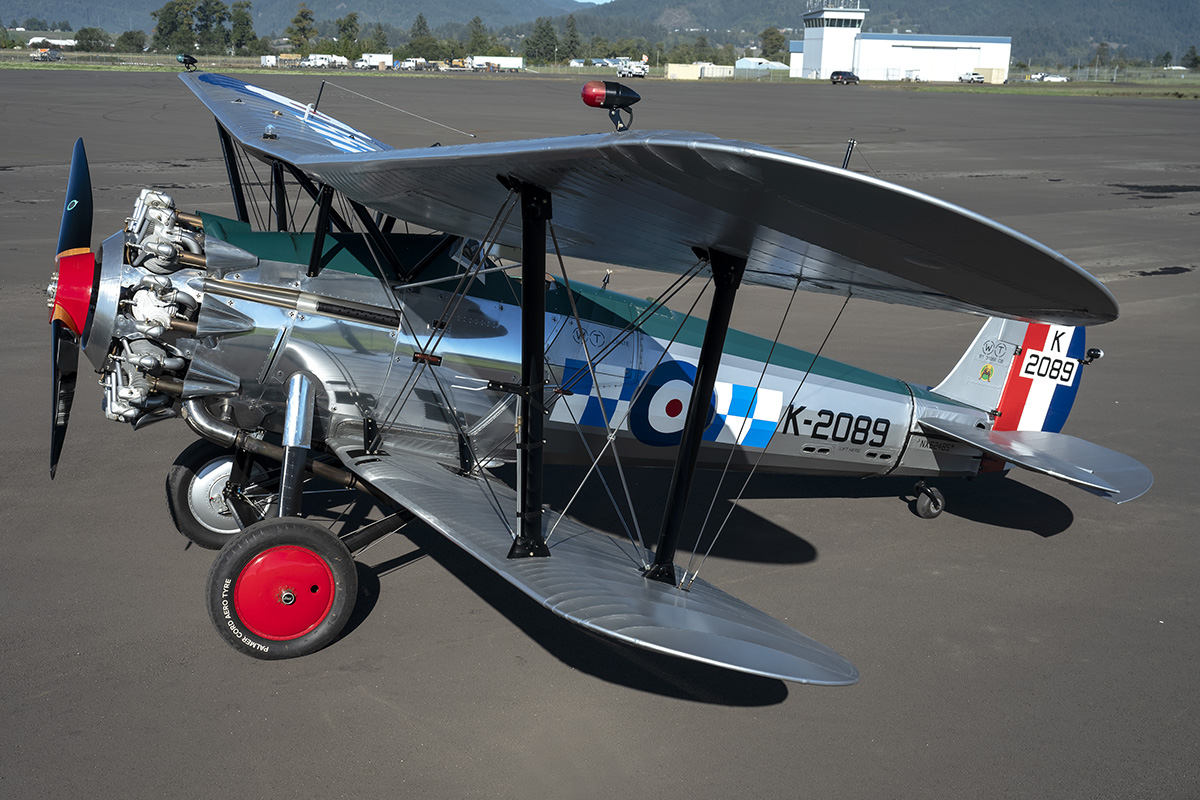
After a short time in the air, Storo circled around to approach Tillamook Airport setting up for landing. “I started to make a normal landing, but as I was getting ready to touch down, I pulled the power off and the tail just fell out from underneath me,” he said. The tail touched down hard, but to save the landing—and the airplane—Storo put power to it and went around for another approach. “Coming back around, I’m usually at about 60 knots. In this fighter, you don’t make square turns, so to speak. You just make one great big U-turn, that way you can kind of watch the runway the whole time. And then when you get down near the threshold, you just hold it off and gently let the wheels down. The landings are a little tricky, if you will. You have to use a lot of rudder—I mean you have to be rabid as far as using the rudder to control the airplane, and it wheel lands very nicely.”
The landing gear are a combination of a rubber cushion with an oleo strut buffering the weight of the aircraft as it touches down. The gear has an eight-inch travel and does not conventionally attach to the bottom longeron, it attaches to the top longeron. “You’re kind of hanging on the landing gear as opposed to sitting on the landing gear,” Storo said. “In the beginning it was kind of weird because I could feel the wheels on the ground, but I was still flying. And the ailerons are almost worthless at that point; they’re not doing a whole lot for you at all. It’s the rudder that is doing everything. That was kind of a strange feeling to get over that squishiness as the airplane settles down on the runway.”
As constructed in the 1920s, the Bristol Bulldogs were delivered without brakes. After a few months of service with the RAF, it was decided to retrofit the fighters with Bendix mechanical brakes. Storo added Hayes hydraulic brakes to his aircraft, much to his chagrin. “The Hayes brakes were just horrible. I had a heck of a time taxiing and making turns,” Storo said. “I quickly swapped them out for Red Line Brakes. The guy up in Canada makes the Red Line Brakes, and those are absolute saviors. Those are the greatest brakes in the world. Those brakes have saved me more than once, that’s for sure. I have actually taxied out with a semi-crosswind where I just turned around and came back in because I could not control the airplane with the earlier brakes. I can control it now with the Red Line Brakes, but this airplane is not built for crosswinds. It is a terrible airplane for crosswinds. When this aircraft type was in service, they didn’t worry about crosswinds. They had a big square field full of grass and they just landed into the prevailing wind.”
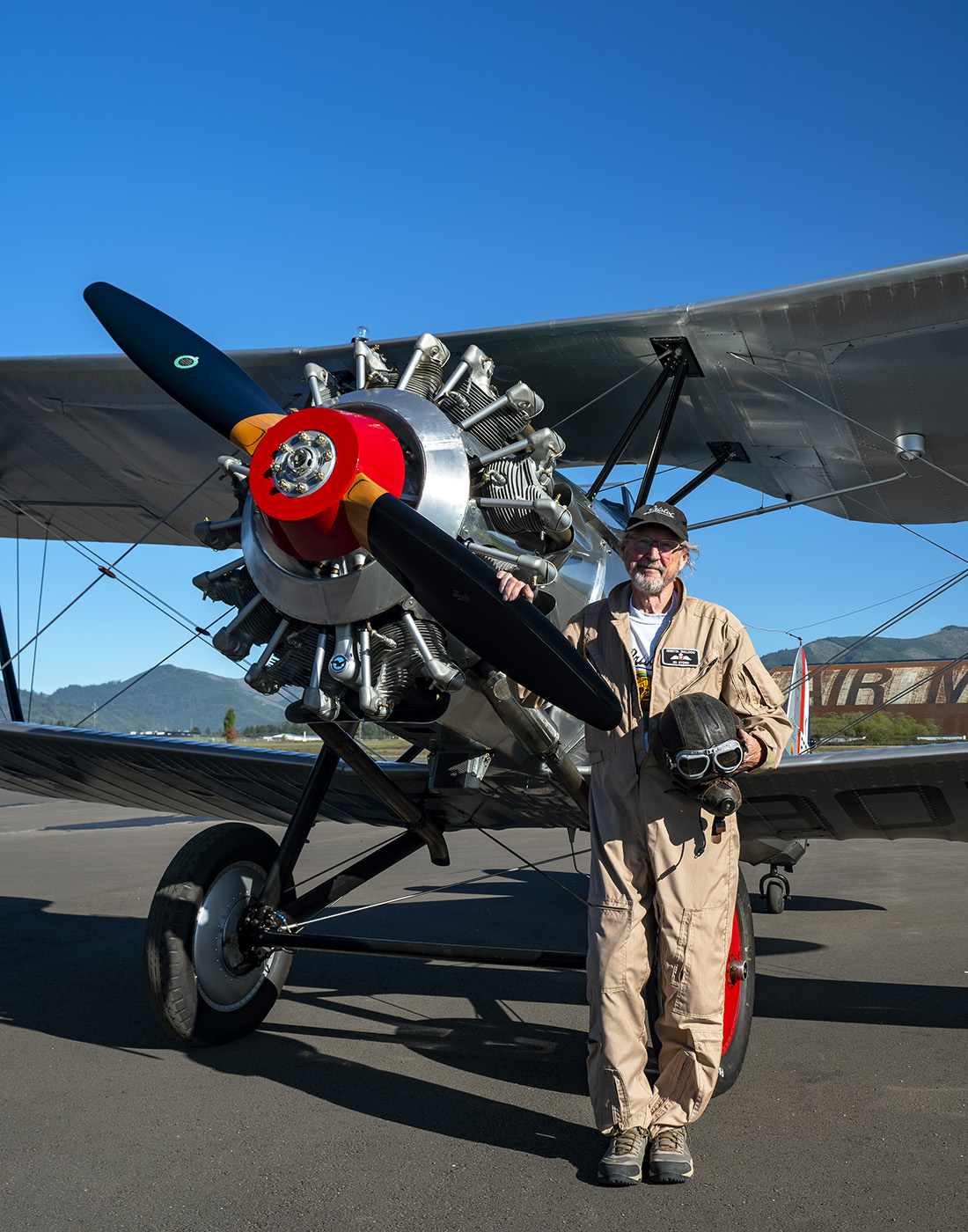
After the Bristol F.2B Fighter, a Bulldog Seems Logical
Storo enjoyed a long career with FedEx, first flying Falcon jets, then Boeing 727s, and finally DC-10s before retiring in 2004. His first personal airplane that he built was a Jurca three-quarter scale Spitfire. That aircraft was donated to the Experimental Aircraft Association Museum. Next Storo built a replica Bristol F.2B Fighter, with much of the structure constructed using Bristol drawings. The F.2B was fitted with a 200 hp inline Ranger 440-5 engine that enabled the replica to hold true to the Fighter’s original cowling lines. The F.2B took seven years to build and was completed in 1993. After enjoying the F.2B for a nearly a decade, or about 200 flying hours, the aircraft was sold to Sir Peter Jackson and registered ZK-JNU. In 2015, the F.2B traded hands and was acquired by Donal John McDonald of Queensland, Australia, and flies to this day.
Having sold the F.2B and now with shop space, Storo began building a Vans RV-8, which today is his “lunch wagon.” Empty space has a way of filling itself with projects, and Storo also finished two RV-8 projects for friends during the early 2000s. Simultaneous to the RV projects, Storo caught a glimpse of a Bristol Bulldog and was intrigued. Having built the F.2B, he knew what he was in for–sort of. “It took me seven years to build the Bristol fighter. And naively, I thought that I could go ahead and build the Bulldog in about the same amount of time, or 10 years at most. Figuring that I was getting ready to retire, I imagined I’d have more time to work on it. And next thing I know it is 20 years later,” he said with a chuckle. Storo contacted Bristol Aerospace in the United Kingdom seeking drawings and other historical assistance, but was sent away empty-handed. Turning to the Public Record Office, Kew, in the City of London, Storo was able to obtain some information but the majority of the Bulldog had to be built from photos and partial descriptions. Tim Moore at SkySport Engineering Ltd., in England and the Finnish museum were very helpful with information needed to build Storo’s Bulldog. He also networked with collectors the world over to solve extremely detailed problems, such as whether the Bulldog used Mk. 1 or Mk. 2 navigation lights, what they looked like, and their dimensions.
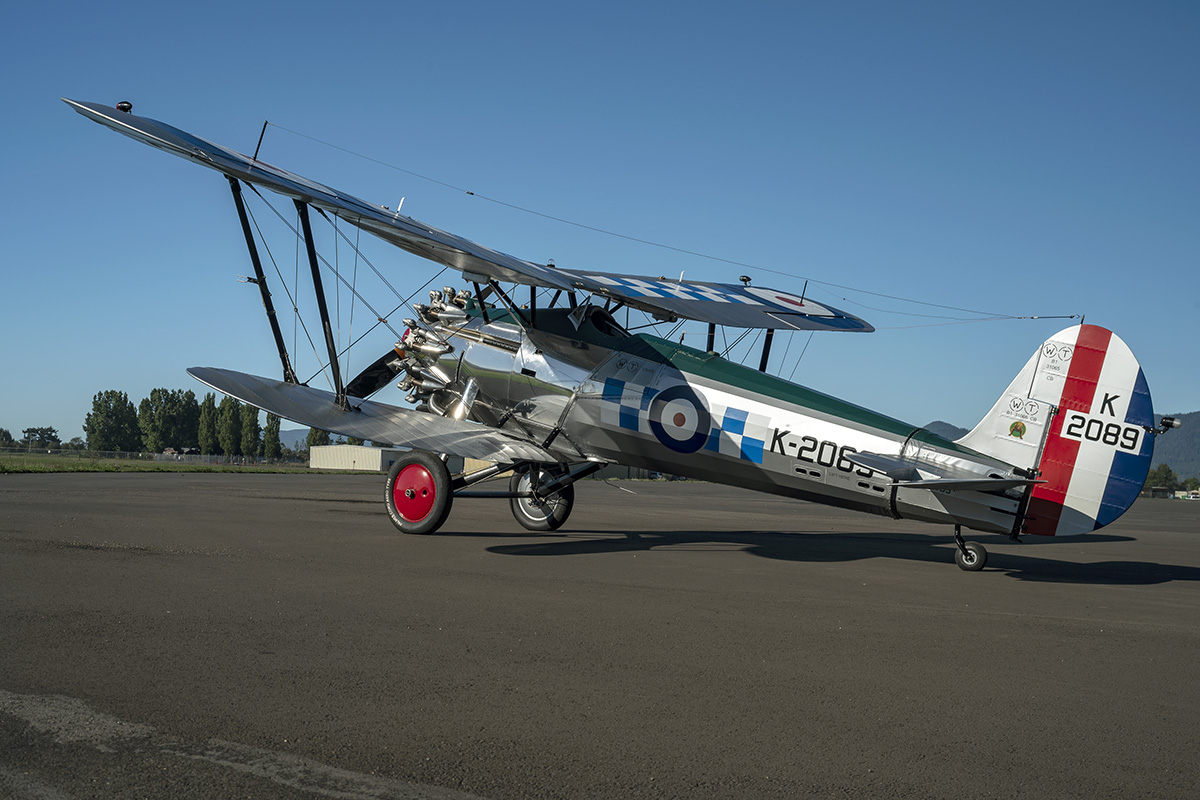
Re-engineering the Bulldog’s Structure
After World War I, the RAF decided they did not want aircraft of wooden construction and pushed for all-metal airplanes. The front end of the Bulldog from the seat forward is round tubing, typical 4130 steel tubing, which is strong and easy to machine or weld. The aft section of the Bulldog is constructed of a three-quarter round tube with flanges, which was married to a one-quarter round tube with flanges. When mated, the flanges sit at a 90-degree angle enabling other structure to be riveted or attached.
“Those round tubes were truly not round. Bristol turned it into an egg shape or an oval, which is much stronger than a circle,” Storo said. “This gives that little bit of extra strength, and the steel was only like, 0.015 or 0.016 inches thick, I mean really thin stuff. But once you take and put all these undulations and things into it, it just becomes extremely strong. Same thing with the spar. The ribs, they were basically all made out of a u-channel. It’s called a ‘hat section.’ That gives those pieces of metal a tremendous amount of strength. The guys at Skyport Engineering who rebuilt the RAF Museum’s airplane spent a fantastic amount of money trying to put together a machine that would roll out this material. I ended up borrowing the method from the Hawker Company who used round tubing spaced five inches apart with side plates on it, and then would rivet down the neutral line.”
“The original wing spar is made up of six pieces of steel that form a rectangle. I had trouble finding anybody that would do the work for me. I did find one guy in England who would build the spars for me. He wanted $10,000 for each spar, so that was $80,000 just to start, which was out of my price range. So, I opted to have an aluminum spar. During the conversion to all-metal aircraft, manufacturers used a wood rib wing, which is what I did.” When looking at the Bulldog, notice that the wing is very thin over the cockpit, but bulges to port and starboard to accommodate the 33 Imperial gallon gravity feed fuel tanks. This was a characteristic of the Mk II and Mk III Bulldogs, but was eliminated in the Mk IV when the airfoil was changed, enclosing the tanks entirely.
Selecting a Powerplant
The Bulldog prototype first flew on May 17, 1927, and the Bristol Aeroplane Co., of Great Britain, built 443 of the type. The first service models were Bulldog Mk. II (92 built) and subsequent aircraft (improved fuselage structure) were designated Mk. IIA (288 constructed). Powered by a 490 hp, nine-cylinder, Bristol Jupiter VIIF engine driving a two-blade, fixed pitch propeller, the aircraft could reach a maximum speed of 178 mph (286 km/h or 155 knots). As the project progressed, Storo set about finding a shop to build the necessary propeller. None of the prop-makers in the United States were interested in the job. Turning again to the United Kingdom, he connected with Hercules Propellers in Gloucestershire, who make many of the propellers for today’s fleet of flying Spitfires (metal hubs with wooden blades). Hurdle overcome.
Storo then turned his attention to finding a suitable substitute for the Jupiter engine. Those that survive are extremely rare with only three examples known to be residing in museums. Conversations with Roy Rehm, the craftsman at Willow Aircraft in Gardnerville, Nevada, who is restoring an original Boeing Model 100 and building an F4B-1 and P-12 (same basic aircraft based on the Model 100 just different designations depending upon military service), a 400 to 420 hp Pratt & Whitney Wasp Model B engine (R-1340-B) was selected. The Wasp B is very similar in size and horsepower to the Jupiter engine making it the logical powerplant for the biplane. The Wasp Model B is a “Greaser” or “Snap Cap” engine as there is no oil in the head. The running gear at the top of the cylinder is manually greased every five hours of run time. Later models, such as the Wasp D, incorporated pumping oil in the heads, which eliminated the need to manually grease the engine.
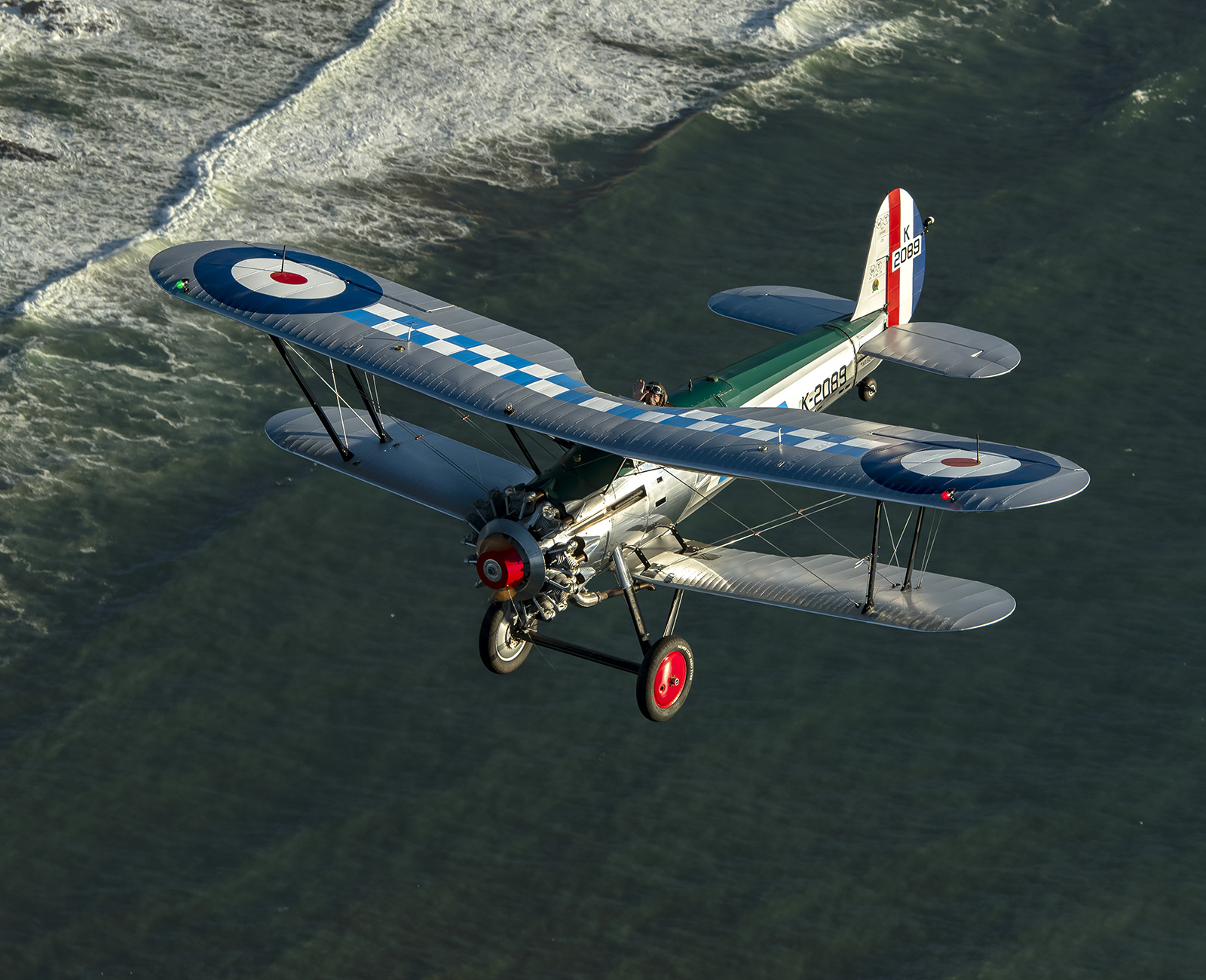
A Special Dedication
There were three brothers Harold, Mack, and Doug Rogan, all from South Africa who flew during World War II. Doug is the South African pilot who flew for that nation’s air force with 2 Squadron in the Western Desert. He had flown 60 hours in Tomahawk IIBs (P-40C) and had two confirmed kills, one German Bf-109 (on Oct. 22, 1941) and an Italian S.79 tri-motor bomber (on Nov. 6, 1941). Three weeks later, on Nov. 24, 1941, Rogan’s Tomahawk was struck by German 20mm anti-aircraft fire, hitting him in the right leg. He was able to stem the blood flow and fly back to base where it was determined that his leg was too damaged to be saved and had to be amputated. Sent back to South Africa to convalesce, Rogan modeled his recovery after Group Captain Sir Douglas Bader, the double amputee RAF pilot. After a year of recovery, Rogan was back in the cockpit and was judged fit to fly combat. He returned to fly Spitfires with 1 Squadron, South African Air Force.
One interesting incident in Rogan’s Spitfire career involved an ERK. “An ERK is what they called their groundcrewmen,” said Storo. “When running up the Spitfire, they would often have an ERK climb onto the rear fuselage to add weight to the tail so the fighter would not nose-over. Well, it turns out that Doug managed to take off with this ERK hanging onto the tail and realized when he got in the air, the way the airplane was flying that he had this guy hanging on the tail back there. He immediately brought it back in again, landed, and the ERK came up to the cockpit saluted Doug, and said, ‘sorry, sir,’ and fainted.” When his tour ended, Doug Rogan was credited with three aerial victories, two probables, and three damaged. Harold and Mack also flew as pilots for the South African Air Force and were killed in the war.
“Harold’s son John is a real good friend of mine and lives a couple of miles away,” said Storo. “John was telling me that they had been doing some maintenance on Doug’s airplane, and for some reason it smelled fishy. They could not figure out why in the heck the cockpit smells so bad? Well, they started looking around, and here’s this empty sardine can laying in the belly of the airplane. Most fighters do not have floors, so the sardine can was right down in the belly. The mechanics were wondering, ‘What the heck is this doing here?’ It turns out that the pilots would carry rations with them in case they were downed someplace they’d have something to eat during the escape. Apparently, Doug had dropped the sardine tin after a snack during a flight. John had told me about this, and then all of a sudden it just hit me. I got a sardine can, marked it, and it is in the back of the cockpit attached to the airplane in tribute to the bravery and dedication of the three Rogan brothers.”
Ed Storo said after the F.2B Fighter that the Bulldog is the “last on the line” to emerge from his shop. His Bristol Bulldog is an outstanding example of the craftsperson’s ability to recreate aviation technology and the building techniques from the late 1920s. It is an amazing aircraft to see in the air. Look for it at a Pacific Northwest fly-ins during the 2024 show season.
